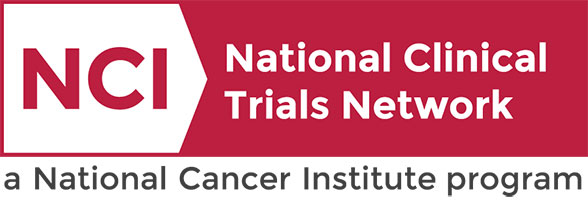Skip to main content
Paranasal Sinus and Nasal Cavity Cancer Treatment (Adult)
- Paranasal sinus and nasal cavity cancer is a disease in which malignant (cancer) cells form in the tissues of the paranasal sinuses and nasal cavity.
- Different types of cells in the paranasal sinus and nasal cavity may become malignant.
- Being exposed to certain chemicals or dust in the workplace can increase the risk of paranasal sinus and nasal cavity cancer.
- Signs and symptoms of paranasal sinus and nasal cavity cancer include sinus problems and nosebleeds.
- Tests that examine the sinuses and nasal cavity are used to diagnose paranasal sinus and nasal cavity cancer.
- Certain factors affect prognosis (chance of recovery) and treatment options.
Pancreatic Cancer
- Pancreatic cancer is a disease in which malignant (cancer) cells form in the tissues of the pancreas.
- Smoking and health history can affect the risk of pancreatic cancer.
- Signs and symptoms of pancreatic cancer include jaundice, pain, and weight loss.
- Pancreatic cancer is difficult to diagnose early.
- Tests that examine the pancreas are used to diagnose and stage pancreatic cancer.
- Certain factors affect prognosis (chance of recovery) and treatment options.
Ovarian Epithelial, Fallopian Tube, and Primary Peritoneal Cancer
- Ovarian epithelial cancer, fallopian tube cancer, and primary peritoneal cancer are diseases in which malignant (cancer) cells form in the tissue covering the ovary or lining the fallopian tube or peritoneum.
- Ovarian epithelial cancer, fallopian tube cancer, and primary peritoneal cancer form in the same type of tissue and are treated the same way.
- Women who have a family history of ovarian cancer are at an increased risk of ovarian cancer.
- Some ovarian, fallopian tube, and primary peritoneal cancers are caused by inherited gene mutations (changes).
- Women with an increased risk of ovarian cancer may consider surgery to lessen the risk.
- Signs and symptoms of ovarian, fallopian tube, or peritoneal cancer include pain or swelling in the abdomen.
- Tests that examine the ovaries and pelvic area are used to diagnose and stage ovarian, fallopian tube, and peritoneal cancer.
- Certain factors affect treatment options and prognosis (chance of recovery).
Oropharyngeal Cancer Treatment (Adult)
- Oropharyngeal cancer is a disease in which malignant (cancer) cells form in the tissues of the oropharynx.
- Smoking or being infected with human papillomavirus (HPV) can increase the risk of oropharyngeal cancer.
- Signs and symptoms of oropharyngeal cancer include a lump in the neck and a sore throat.
- Tests that examine the mouth and throat are used to diagnose and stage oropharyngeal cancer.
- Certain factors affect prognosis (chance of recovery) and treatment options.
Non-Hodgkin Lymphoma
- Non-Hodgkin lymphoma is a disease in which malignant (cancer) cells form in the lymph system.
- Non-Hodgkin lymphoma can be indolent or aggressive.
- Older age, being male, and having a weakened immune system can increase the risk of adult non-Hodgkin lymphoma.
- Signs and symptoms of adult non-Hodgkin lymphoma include swollen lymph nodes, fever, drenching night sweats, weight loss, and fatigue.
- Tests that examine the lymph system and other parts of the body are used to diagnose and stage adult non-Hodgkin lymphoma.
- Certain factors affect prognosis (chance of recovery) and treatment options.
Nasopharyngeal Cancer Treatment (Adult)
- Nasopharyngeal cancer is a disease in which malignant (cancer) cells form in the tissues of the nasopharynx.
- Ethnic background and being exposed to the Epstein-Barr virus can affect the risk of nasopharyngeal cancer.
- Signs of nasopharyngeal cancer include trouble breathing, speaking, or hearing.
- Tests that examine the nose, throat, and nearby organs are used to diagnose and stage nasopharyngeal cancer.
- Certain factors affect prognosis (chance of recovery) and treatment options.
Chronic Myeloproliferative Neoplasms
- Myeloproliferative neoplasms are a group of diseases in which the bone marrow makes too many red blood cells, white blood cells, or platelets.
- There are 6 types of chronic myeloproliferative neoplasms.
- Tests that examine the blood and bone marrow are used to diagnose chronic myeloproliferative neoplasms.
Myelodysplastic Syndromes
- Myelodysplastic syndromes are a group of cancers in which immature blood cells in the bone marrow do not mature or become healthy blood cells.
- The different types of myelodysplastic syndromes are diagnosed based on certain changes in the blood cells and bone marrow.
- Age and past treatment with chemotherapy or radiation therapy affect the risk of a myelodysplastic syndrome.
- Signs and symptoms of a myelodysplastic syndrome include shortness of breath and feeling tired.
- Tests that examine the blood and bone marrow are used to diagnose myelodysplastic syndromes.
- Certain factors affect prognosis (chance of recovery) and treatment options.
Plasma Cell Neoplasms (Including Multiple Myeloma)
- Plasma cell neoplasms are diseases in which the body makes too many plasma cells.
- Plasma cell neoplasms can be benign (not cancer) or malignant (cancer).
- There are several types of plasma cell neoplasms.
- Monoclonal gammopathy of undetermined significance (MGUS)
- Plasmacytoma
- Multiple myeloma
- Multiple myeloma and other plasma cell neoplasms may cause a condition called amyloidosis.
- Age can affect the risk of plasma cell neoplasms.
- Tests that examine the blood, bone marrow, and urine are used to diagnose multiple myeloma and other plasma cell neoplasms.
- Certain factors affect prognosis (chance of recovery) and treatment options.
Melanoma
- Melanoma is a disease in which malignant (cancer) cells form in melanocytes (cells that color the skin).
- There are different types of cancer that start in the skin.
- Melanoma can occur anywhere on the skin.
- Unusual moles, exposure to sunlight, and health history can affect the risk of melanoma.
- Signs of melanoma include a change in the way a mole or pigmented area looks.
- Tests that examine the skin are used to diagnose melanoma.
- Certain factors affect prognosis (chance of recovery) and treatment options.
Subscribe to


